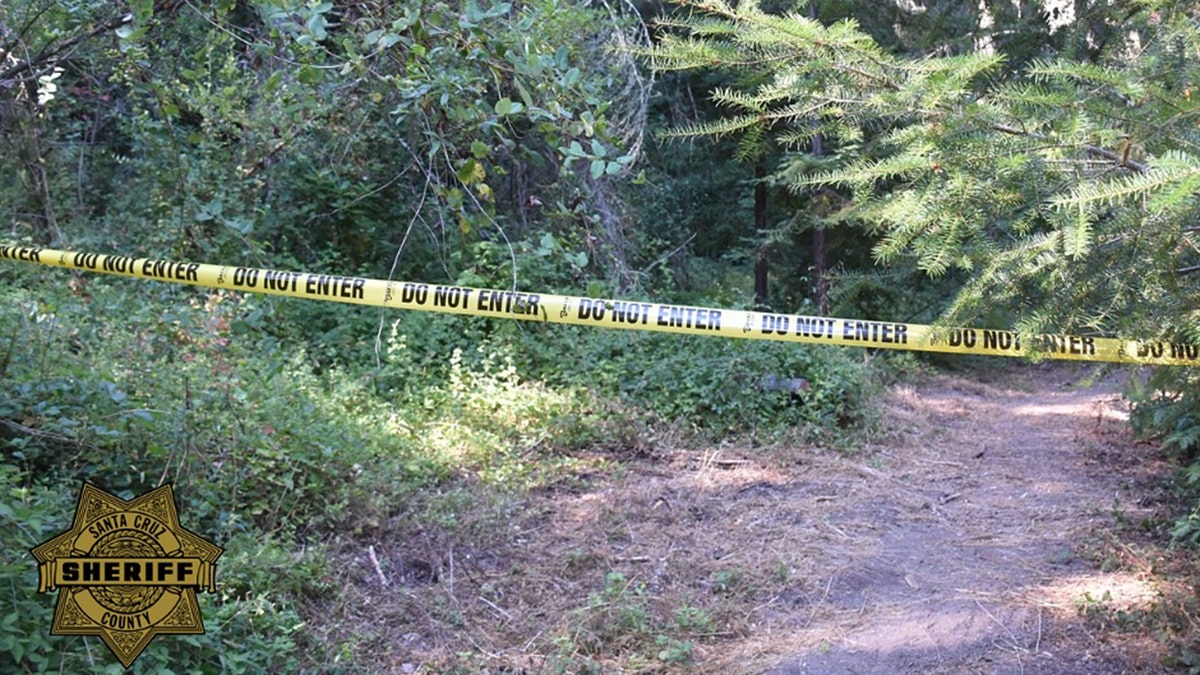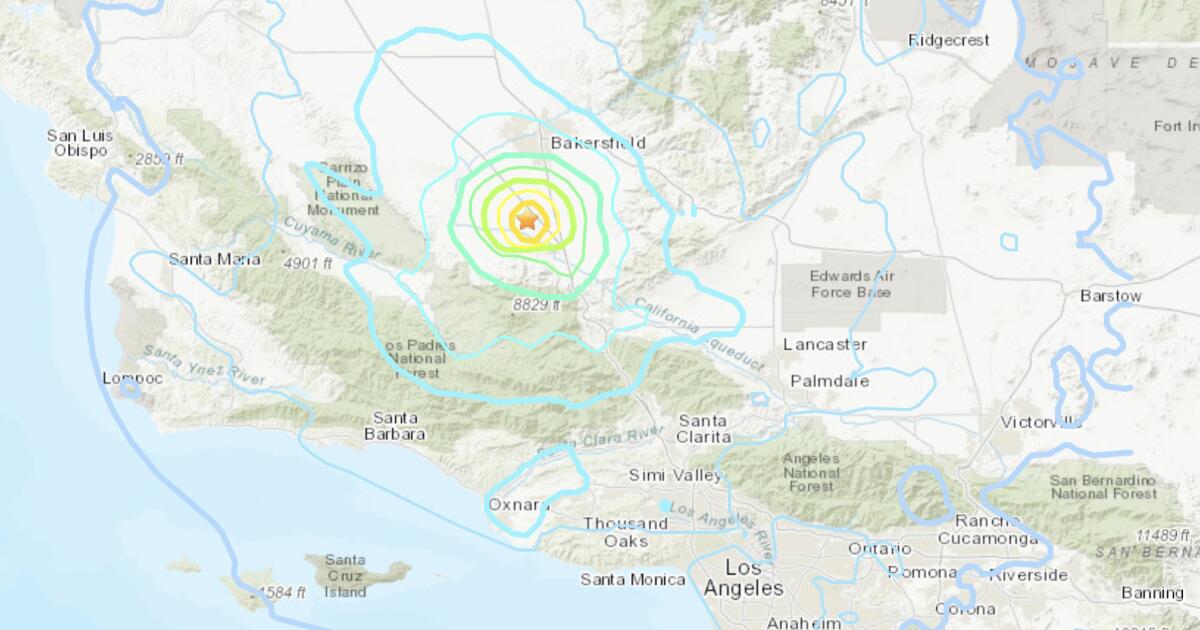World News
China strives to lure foreign tourists, but it’s a hard sell for some
By Sophie Yu and Casey Hall
BEIJING (Reuters) – Guilherme Carvalho made his first visit to China this month, and the Italian said one of the main factors behind the trip was the post-pandemic policy to scrap entry permits for some tourists.
Previously, all foreign visitors had to go through the onerous process of applying for a Chinese visa. Now, visitors from more than a dozen countries can just fly in, and stay for up to 15 days.
“I didn’t expect to feel so safe,” said Carvalho, who visited Shanghai. “Everyone is so kind.”
Carvalho is not alone. As the authorities focus on boosting foreign tourism in a bid to revive the economy and perk up sluggish consumer spending, thousands of visitors have flocked to China, encouraged by the visa policies and easier access to its unique digital payment services.
As of June 24, bookings from several countries under the visa policy including France, Germany, Italy, Malaysia and Thailand surged 150% year-on-year, data from China’s largest online travel agency Trip.com showed.
Bookings for July and August are also set to be higher.
“We’re very excited to see the trend. Lots of people had some misunderstandings about China before they came, but after they arrive, they feel cities like Shanghai are very safe, very clean,” said Trip.com CEO Jane Sun.
Since December, China has granted visa-free entry to tourists from several countries, including France, Germany, Italy, Spain, Australia, New Zealand and Poland.
Southeast Asian countries including Thailand, Singapore and Malaysia have also struck agreements with Beijing to facilitate visa-free travel.
In the week that China announced visa-free travel for visitors from Australia and New Zealand, sales of tours jumped 133% compared to the previous week, said Yvette Thompson, general manager for sales and marketing for Australia and New Zealand at tour agency Intrepid Travel.
“Coming out of COVID, visas are just another level of complexity for travellers. So to remove that complexity, I think is a good move,” she said.
LONG-HAUL RECOVERY
The recent surge in tourism comes after China closed its borders in early 2020 to combat the COVID-19 pandemic, and kept them shut until the start of 2023.
But even with the visa-free policy boost, far fewer tourists are coming to China now than before the pandemic.
According to official tourism data, China received a total of 49.1 million overseas visitors in 2019, with more than a third coming in for sightseeing and leisure. Revenue from international tourism reached $131.3 billion that year.
In the first half of 2024, the number of foreign nationals entering China was far lower at 14.6 million. Among them, 8.5 million entered visa-free, accounting for just over half of the total, according to the National Immigration Administration.
International tourism revenue data for China has not been published since 2019.
Travel agents say they are hopeful next year will bring in more foreign tourists as global demand for travel, and flight schedules, recover further to pre-pandemic levels.
However, China needs to do more than just waive visas to encourage foreigners, experts say.
Geopolitical tensions, a government that tolerates no dissent and China’s sometimes belligerent portrayal in some Western media have kept some tourists away. Last month, two separate knife attacks on foreigners also sparked security concerns.
China must also compete for attention with Japan, which is experiencing a boom in tourism thanks to its weak yen.
“The more that we talk around the reasons to go to China – the diverse landscapes, the history, the difference between imperial Beijing versus futuristic Shanghai – I think the faster that negative PR dissipates,” travel agent Thomson said.
Another potential hurdle for foreigners is China’s vast digital infrastructure.
Paying for everything from transport tickets to restaurant bookings to tourist site admissions is done via QR codes linked to local payment apps such as WeChat and Alipay, making daily interactions difficult for holders of foreign bank cards.
China has allowed foreign bank cards to be linked to Alipay and WeChat, but the system and language barriers remain daunting.
“I can’t imagine how a foreigner who doesn’t have Chinese payment tools and doesn’t speak the language can deal with all this,” said Liang Hongling, a Chinese scholar living in Glasgow and who plans to travel with her Irish husband to her hometown in Xinjiang this month.
(Reporting by Sophie Yu in Beijing and Casey Hall in Shanghai; Editing by Anne Marie Roantree and Miral Fahmy)
World News
Missing California mother found dead near hiking trail after partner threatened 3-year-old daughter: police

A missing mother in Northern California was found dead near a hiking trail in the mountains on Sunday, hours after authorities say the woman’s partner threatened their 3-year-old daughter with a knife and charged at a police officer.
The body of Lizbeth Arceo Sedano, 25, was found around 9:40 a.m. near Eureka Canyon Road and Grizzly Flat Road in the Santa Cruz Mountains, the Santa Cruz County Sheriff’s Office said.
Deputies responded to the call and investigators determined the body belonged to the 25-year-old mother, who had been reported missing in Watsonville a day earlier.
Sedano’s family reported her missing after the mother’s partner, Joshua Gonzalez, called the Watsonville Police Department from outside the police station at around 9:20 p.m. Saturday and threatened to harm their 3-year-old daughter, the department said.
IDAHO 5-YEAR-OLD FOUND DEAD AFTER WANDERING AWAY FROM HIS BIRTHDAY PARTY: POLICE

Sedano’s body was found around 9:40 a.m. Sunday near Eureka Canyon Road and Grizzly Flat Road in the Santa Cruz Mountains. (Santa Cruz County Sheriff’s Office)
A responding officer exited his patrol car and ordered Gonzalez to drop the knife. Gonzalez ignored the officer’s command, according to police, and instead charged toward the officer.

The death of 25-year-old Lizbeth Arceo Sedano is being investigated as suspicious, the sheriff’s office said. (Watsonville Police Department)
The officer then opened fire on Gonzalez, who was injured and taken to an out-of-county trauma center, where he is in stable condition, police said.

Sedano’s partner, Joshua Gonzalez, was taken into custody after threatening to harm their 3-year-old daughter with a knife and charging at a police officer, mere hours before Sedano’s body was found, authorities said. (Watsonville Police Department)
The three-year-old child was unharmed and was under the care of family members.
TEXAS FAMILY MISSING ON ALASKA VACATION AFTER BOAT CAPSIZES OFF COAST
The sheriff’s office said Sedano’s death “is being investigated as suspicious.”
“Cause and manner will be determined by our Forensic Pathologist and detectives will continue to investigate this case,” the sheriff’s office said.
World News
Government concerned by immigration lawyer ‘hitlist’

The government says social media platforms “clearly need to do far more” after it emerged a list purporting to contain the names and addresses of immigration lawyers was being spread online.
Initially shared on the Telegram messaging app – along with the phrase “no more immigration” – it has now begun appearing on other platforms.
Lawyers have told the BBC they have been advised by police to work from home, board up office windows and install fireproof letterboxes.
Jim McMahon, minister for Housing, Communities and Local Government, told the Today programme, on BBC Radio 4, that he was “concerned”.
The Law Society of England and Wales said it was treating the list as a “very credible threat” to its members.
“This week has been a stark reminder that the anti-lawyer rhetoric has very real-world consequences for solicitors working tirelessly for their clients, access to justice and the rule of law,” said its president Nick Emmerson.
“We don’t know if they will transpire to be protests like we’ve seen in other places or whether it’s a list that’s intended just to cause alarm and distress or even to provoke,” Mr McMahon said.
“But to be clear we are absolutely prepared in terms of our policing response, in terms of our prosecutor response, and also in terms of our court response.”
The BBC has approached Telegram for comment on the spreading of the list – it is yet to respond.
However, in a previous statement about the unrest it said its moderators were “actively monitoring the situation and are removing channels and posts containing calls to violence.”
It said such “calls to violence” were explicitly forbidden in its terms of service.
Mr McMahon warned people could “expect the full force of the law” if they “cross the line”, whether it is “on the street or online”.
The Telegram group was created just hours after the killing of three children at a holiday club in Southport, on Merseyside, on 29 July.
That triggered waves of unrest in England and Northern Ireland, partly fuelled by far-right activists and online misinformation.
One immigration lawyer on the list told the BBC she had been repeatedly threatened, and received messages on Monday telling her she was “on a hitlist”.
Mr McMahon would not be drawn on whether Telegram could be told to remove channels where the list is being spread, or whether the messaging app could be blocked altogether.
He said it was important that police and prosecutors were able to do their jobs “without any political interference”.
Mark Webster, the chief constable of Cleveland Police, told Today people should be “very careful” about “naming individual premises or saying what we’re doing individually in forces”.
“You will see an awful lot of resource today and over the following days to make sure we can manage responses to all of the intelligence that comes in,” he said.
He urged people to focus on official communications online, and not to “react to things on social media from sources you can’t verify”.
World News
California earthquake: Magnitude 5.2 quake rattles SoCal


A magnitude 5.2 earthquake, centered about 18 miles southwest of Bakersfield, was felt across a wide swath of Southern California on Tuesday night.
The earthquake, originally estimated at magnitude 5.3, struck at 9:09 p.m., according to the U.S. Geological Survey. It was followed by dozens of aftershocks of magnitude 2.5 and up, including a magnitude 4.5 earthquake that occurred less than a minute after the first, and a magnitude 4.1 temblor at 9:17 p.m.
The epicenter was in sparsely populated farmland, about 14 miles northwest of the unincorporated community of Grapevine in Kern County, 60 miles northwest of Santa Clarita, and about 88 miles northwest of downtown Los Angeles.
Two minutes after the earthquake hit, a large boulder — the size of an SUV — was reported blocking multiple southbound lanes of Interstate 5, about a mile south of Grapevine Road, the California Highway Patrol said. The boulder was still blocking lanes of traffic at least an hour after the earthquake.
The area closest to the epicenter felt “very strong” shaking as defined by the Modified Mercalli Intensity Scale; that zone includes a section of the California Aqueduct, which transports water from Northern California to Southern California.
By the time shaking was felt in more populated areas, including Bakersfield, Santa Clarita and Ventura, the USGS calculated that only “weak” shaking was felt, which can rock standing cars and cause vibrations in a building similar to the passing of a truck.
Some residents affected by the quake reported an extended period of shaking. One person in Los Feliz felt 45 seconds of movement, with at least three different waves — one weak, followed by a strong one, then again a weak one. In South Pasadena and Whittier, people felt about 20 seconds of shaking, contained in two distinctive waves.
In Pasadena, seismologist Lucy Jones said she felt about three seconds of shaking.
There were no immediate reports of damage. And not everyone felt the earthquake. L.A. County Sheriff’s Deputy Jose Gomez said he didn’t feel the shaking during his drive into work at the sheriff’s Santa Clarita station. No damage was reported there.
The Los Angeles Fire Department said no significant damage was reported within city limits.
The USGS said the quake was felt across the Los Angeles Basin and inland valleys and in Santa Maria, Bakersfield and Fresno.
Many Southern California residents described getting alerts from the USGS’ earthquake early warning system, such as through the MyShake app or on their Android phones. (The earthquake early warning system is automatically installed on Android phones, but people with Apple iOS phones need to install the MyShake app to get the most timely alerts.)
One person described getting 30 to 45 seconds of warning before feeling the shaking arrive. Another person, in east Anaheim, reported 30 seconds of warning before shaking arrived.
Jones, a research associate at Caltech, said the duration of shaking can vary so much in the L.A. area because the length of time the earth moves at any given spot can depend on the soil and rocks beneath the location, whether a person is sitting still or moving around, and even whether an individual is on the ground floor or on top of a skyscraper — those on higher floors feel the shaking more strongly.
The reason some people may have felt more than one wave of shaking is that the first aftershock occurred so soon — less than a minute — after the main shock, Jones said.
Geophysics professor Allen Husker, head of the Southern California Seismic Network at Caltech, said it wasn’t surprising that so many people in the L.A. area felt significant shaking from a magnitude 5.2 earthquake north of the Grapevine. The temblor occurred at night, when people are resting and more likely to feel shaking from a distant quake than if they were out and about during the day and active.
Another reason many people felt substantial movement is due to the way shaking is amplified in the Los Angeles Basin. The basin is a 6-mile-deep, bathtub-shaped hole in the underlying bedrock filled with weak sand and gravel eroded from the mountains and forming the flat land where millions of people live. It stretches from Beverly Hills through southeast L.A. County and into northern Orange County.
“The basin effect … increases the shaking that you would otherwise normally have,” Husker said.
The effect happens when waves from the shaking arrive and hit the walls of the basin, then bounce back at the walls of the basin, Jones said, resulting in an “extended duration.”
A major earthquake on the San Andreas fault would result in perhaps 50 seconds of strong shaking in downtown L.A. “This earthquake was much, much smaller, of course,” Jones said, “but it was large enough to set up some of these basin effects and get things bouncing around.”
As with all earthquakes, there was a 1 in 20 chance that Tuesday’s temblor was a foreshock to a larger earthquake. The risk that a follow-up quake will be larger diminishes over time.
In the last 10 days, there had been no earthquakes of magnitude 3.0 or greater centered nearby.
An average of five earthquakes with magnitudes of 5.0 to 6.0 occur per year in California and Nevada, according to a recent three-year data sample.
Tuesday’s earthquake occurred about 12 miles northwest of the epicenter of the magnitude 7.5 Kern County earthquake that struck on July 21, 1952. That earthquake resulted in 12 deaths, and, according to the USGS, old and poorly built masonry buildings suffered damage. Some of those structures collapsed in communities including Tehachapi, Bakersfield and Arvin; heavy damage was reported at Kern County General Hospital.
Shaking from the 1952 earthquake was felt as far away as San Francisco and Las Vegas, and caused nonstructural but extensive damage to tall buildings in the Los Angeles area and damage to at least one building in San Diego, according to the USGS.
The 1952 earthquake occurred on the White Wolf fault. Tuesday’s earthquake wasn’t associated with any previously mapped faults.
The earthquake occurred at a depth of 5.6 miles. Did you feel this earthquake? Consider reporting what you felt to the USGS.
Find out what to do before, and during, an earthquake near you by signing up for our Unshaken newsletter, which breaks down emergency preparedness into bite-sized steps over six weeks. Learn more about earthquake kits, which apps you need, Lucy Jones’ most important advice and more at latimes.com/Unshaken.
The first version of this story was automatically generated by Quakebot, a computer application that monitors the latest earthquakes detected by the USGS. A Times editor reviewed the post before it was published. If you’re interested in learning more about the system, visit our list of frequently asked questions.
Times staff writers Jon Healey, Ian James, Jason Neubert, Sandra McDonald and Raul Roa contributed to this report.
-

 African History5 years ago
African History5 years agoA Closer Look: Afro-Mexicans 🇲🇽
-

 African History7 months ago
African History7 months agoBlack History Facts I had to Learn on My Own pt.6 📜
-

 African History5 years ago
African History5 years agoA Closer Look: Afro-Mexicans 🇲🇽
-

 African History1 year ago
African History1 year agoMajor African Tribes taken away during the Atlantic Slave Trade🌍 #slavetrade #africanamericanhistory
-

 African History1 year ago
African History1 year agoCameroon 🇨🇲 World Cup History (1962-2022) #football #realmadrid #shorts
-

 African History1 year ago
African History1 year agoWhat did Columbus Find in 1493? 🤯🔥🔥 #history #civilization #mesoamerica #africa #kemet
-

 African History7 months ago
African History7 months agoBlack History Inventors: Mary Kenner 🩸
-

 African History1 year ago
African History1 year agoOrigin Of ‘Cameroon’ 🇨🇲😳#africa


































